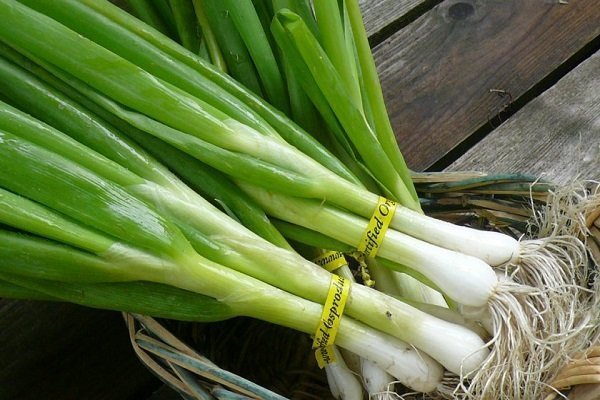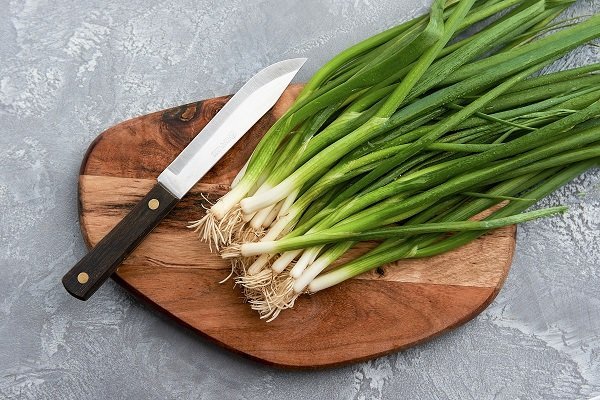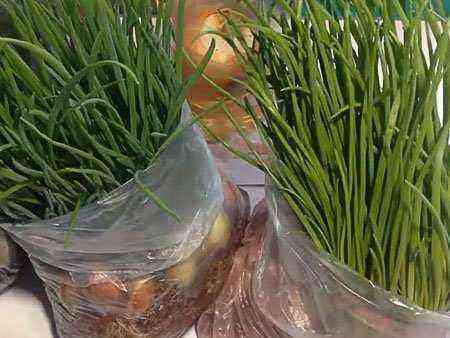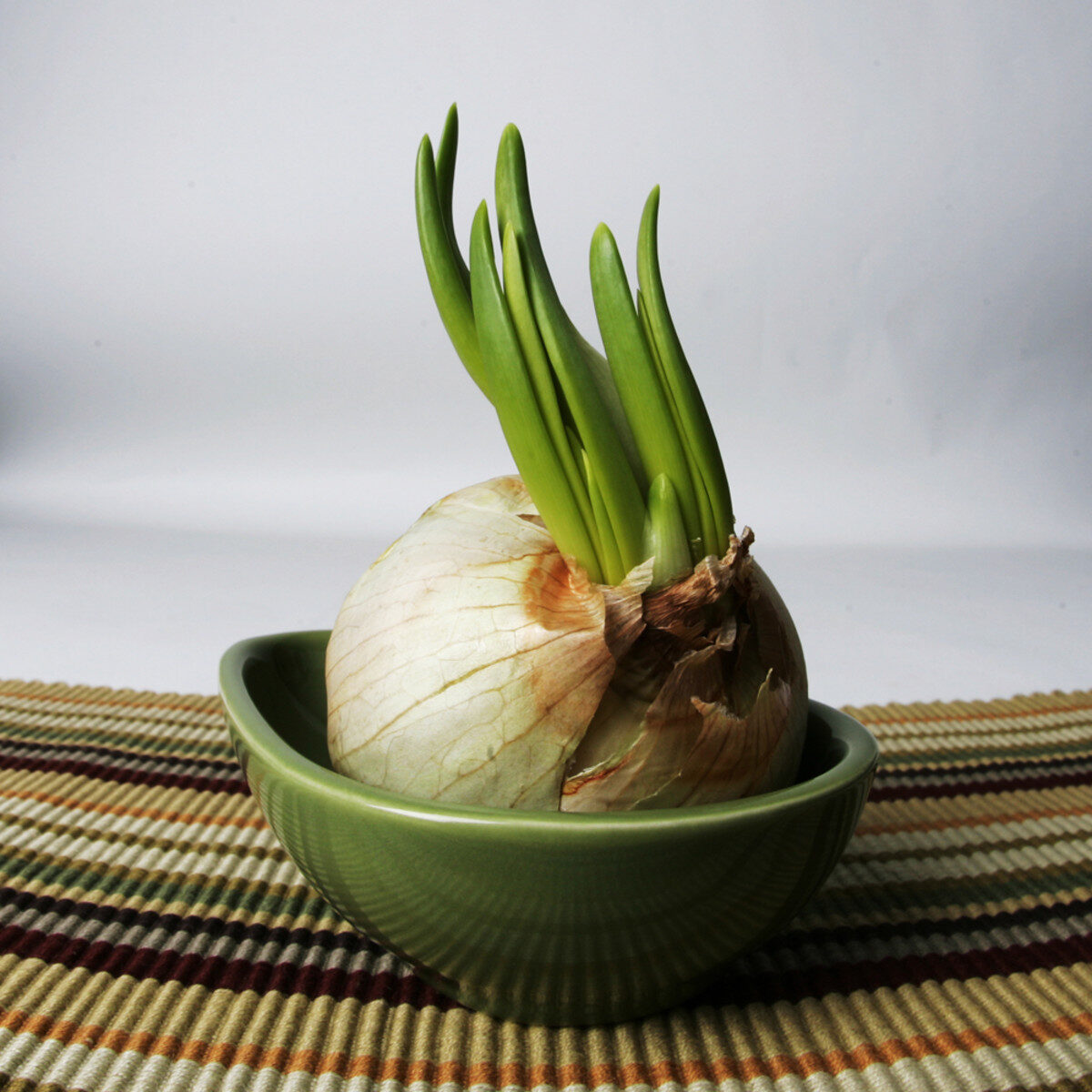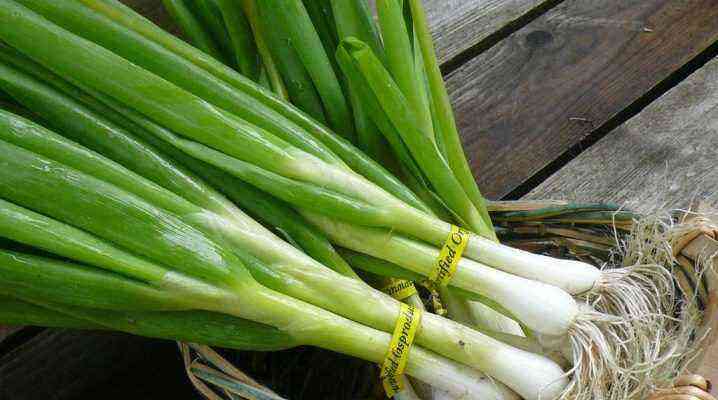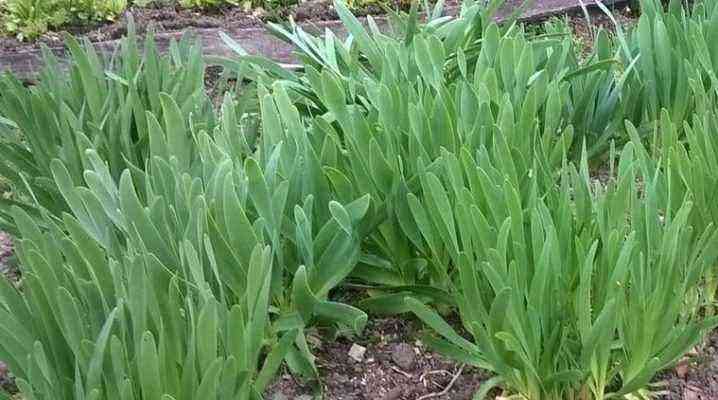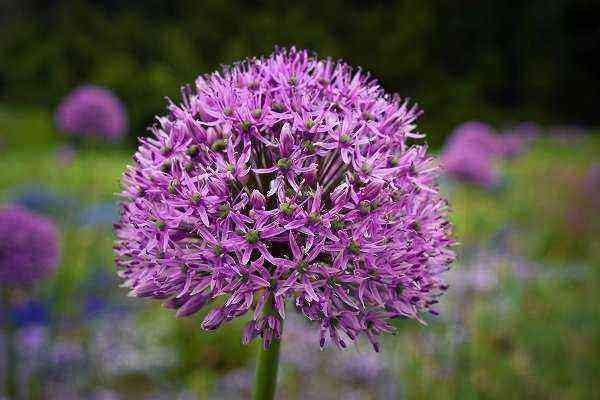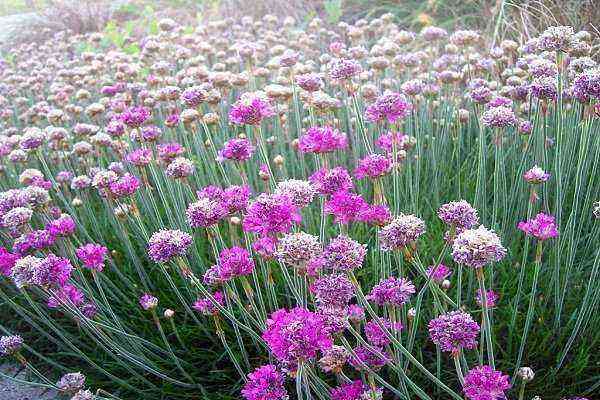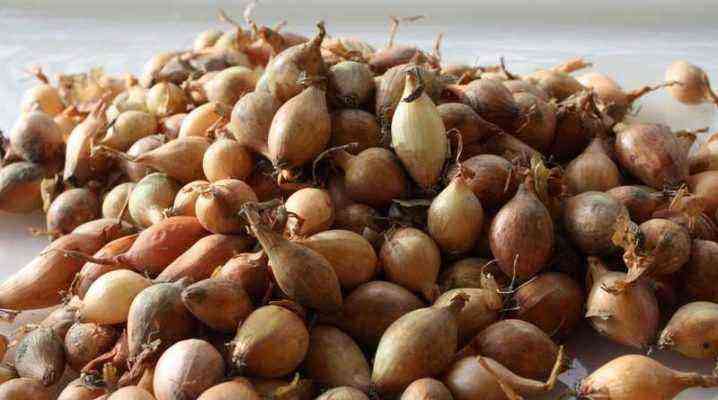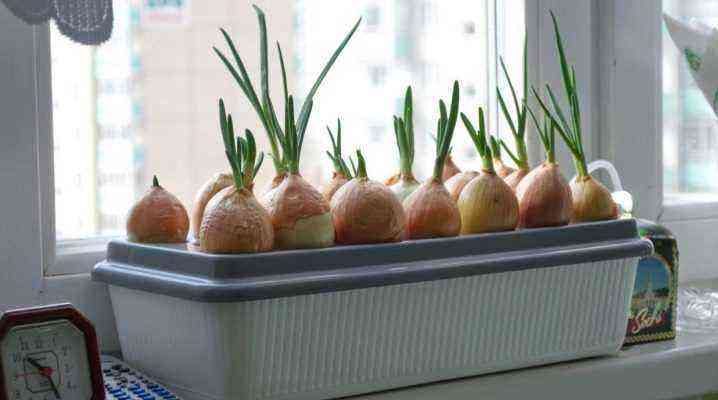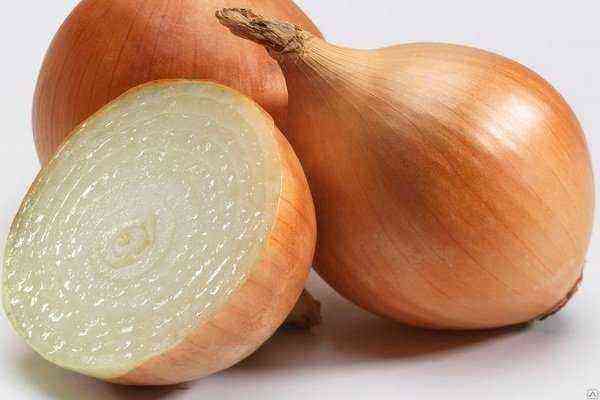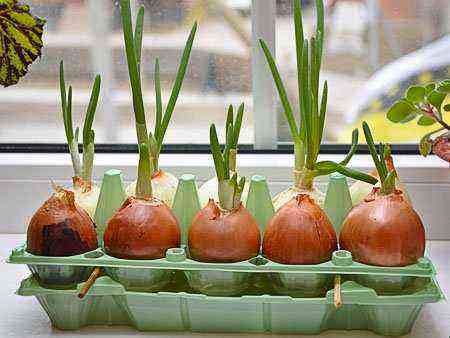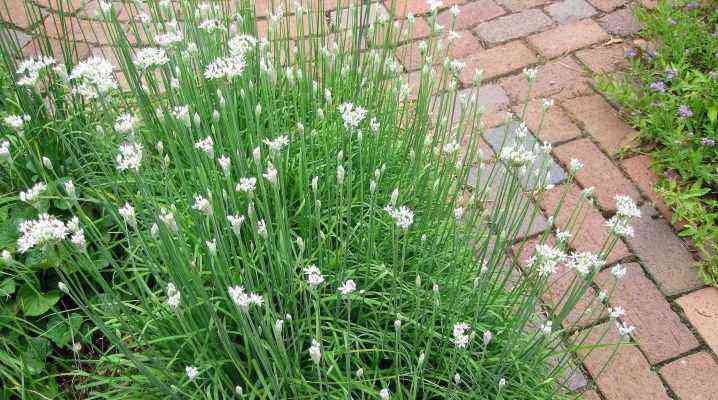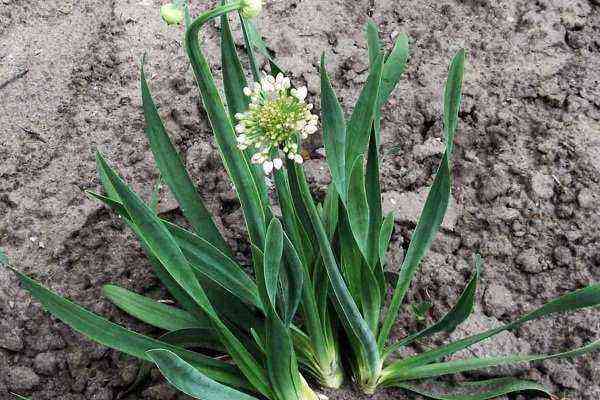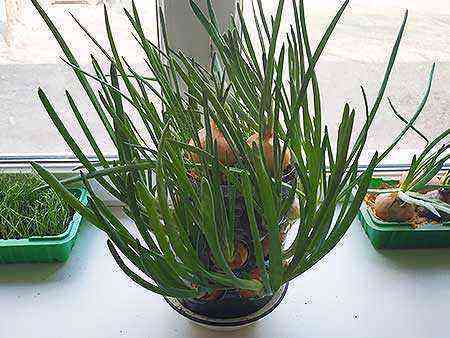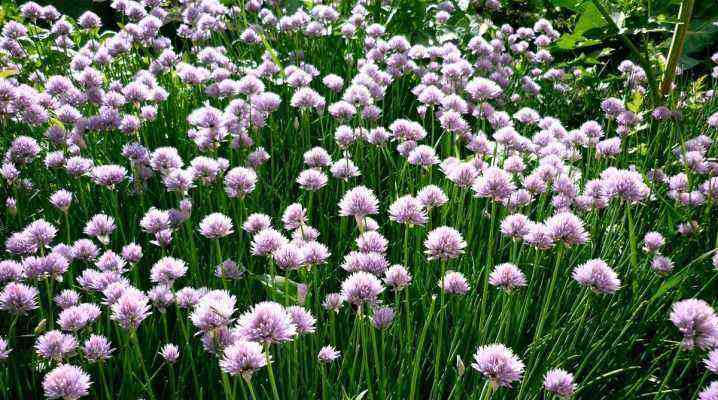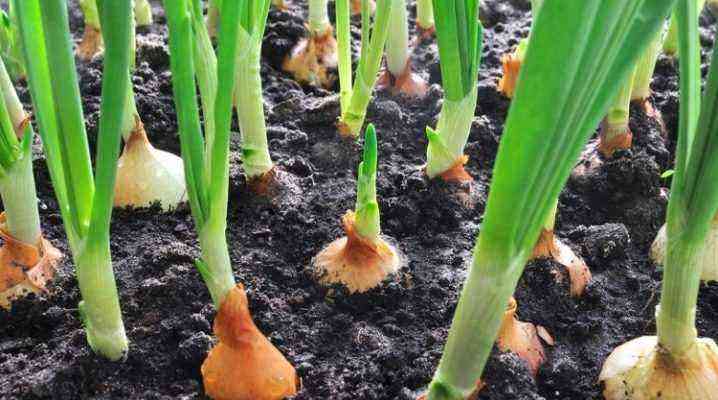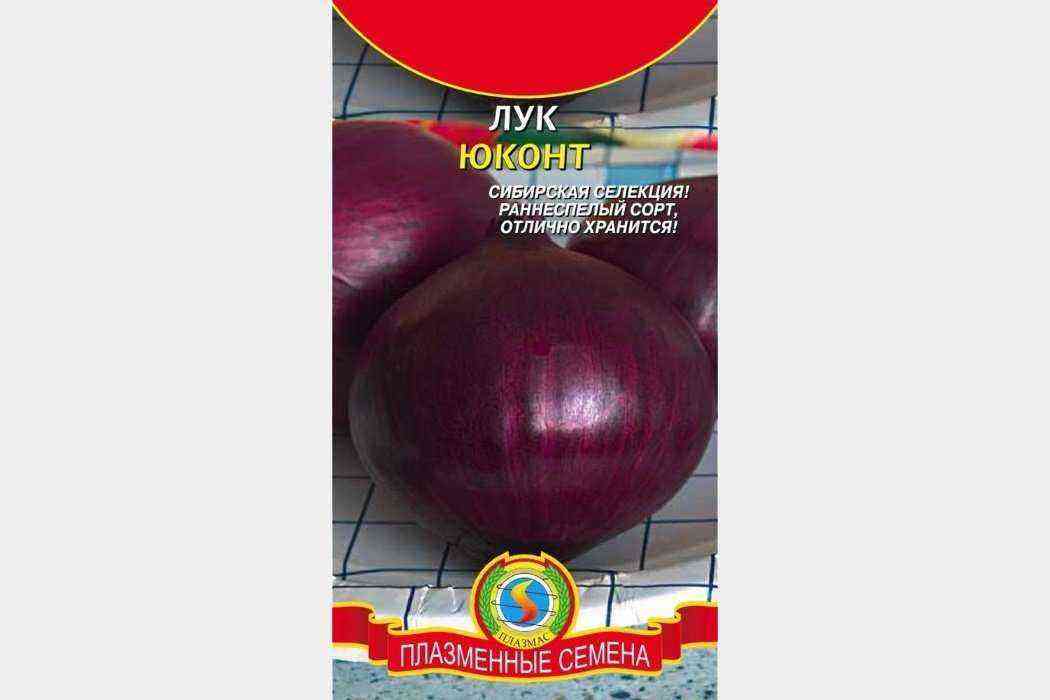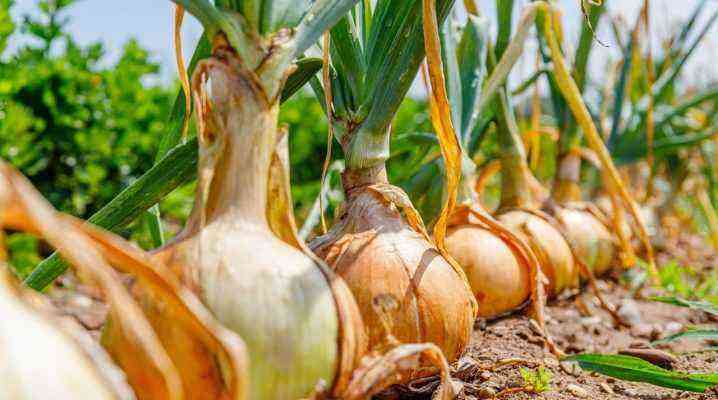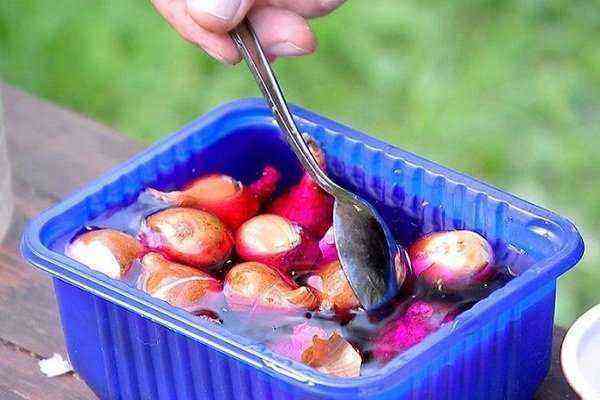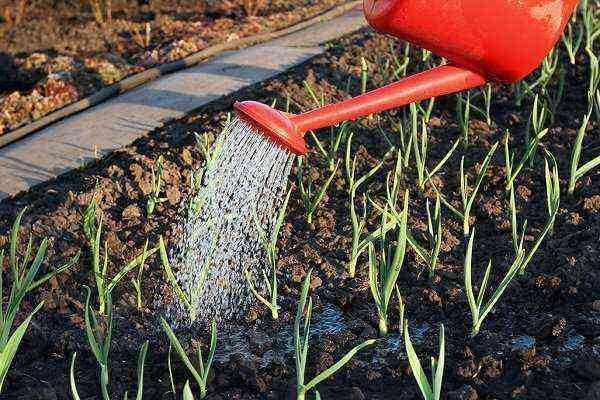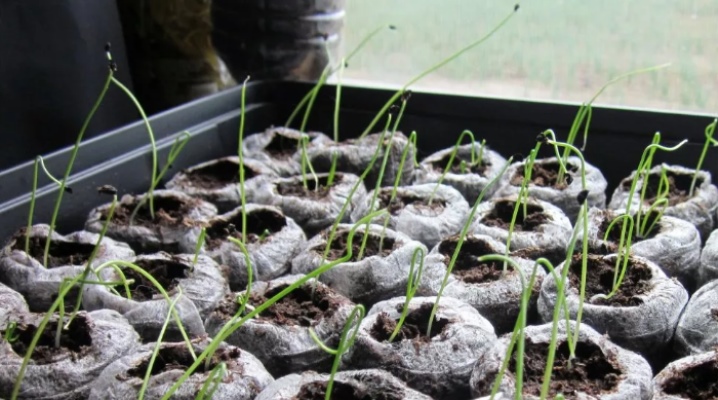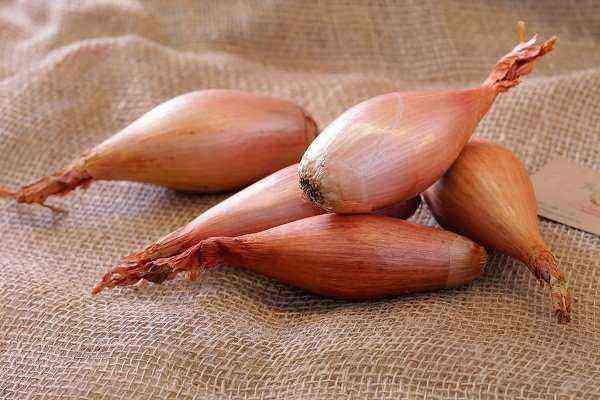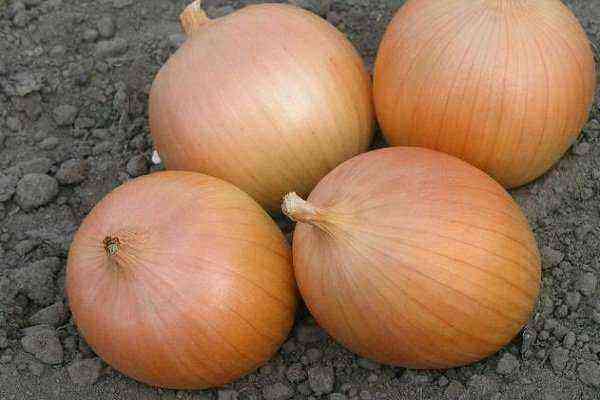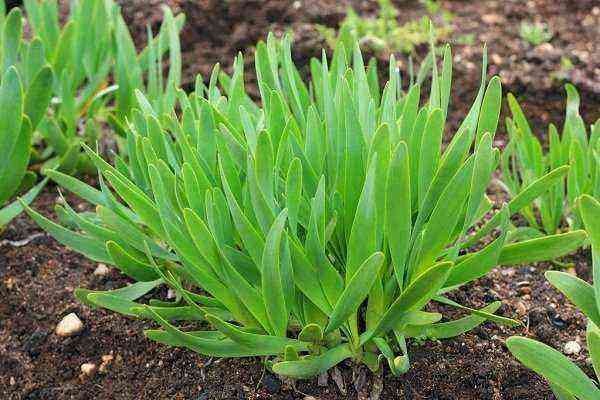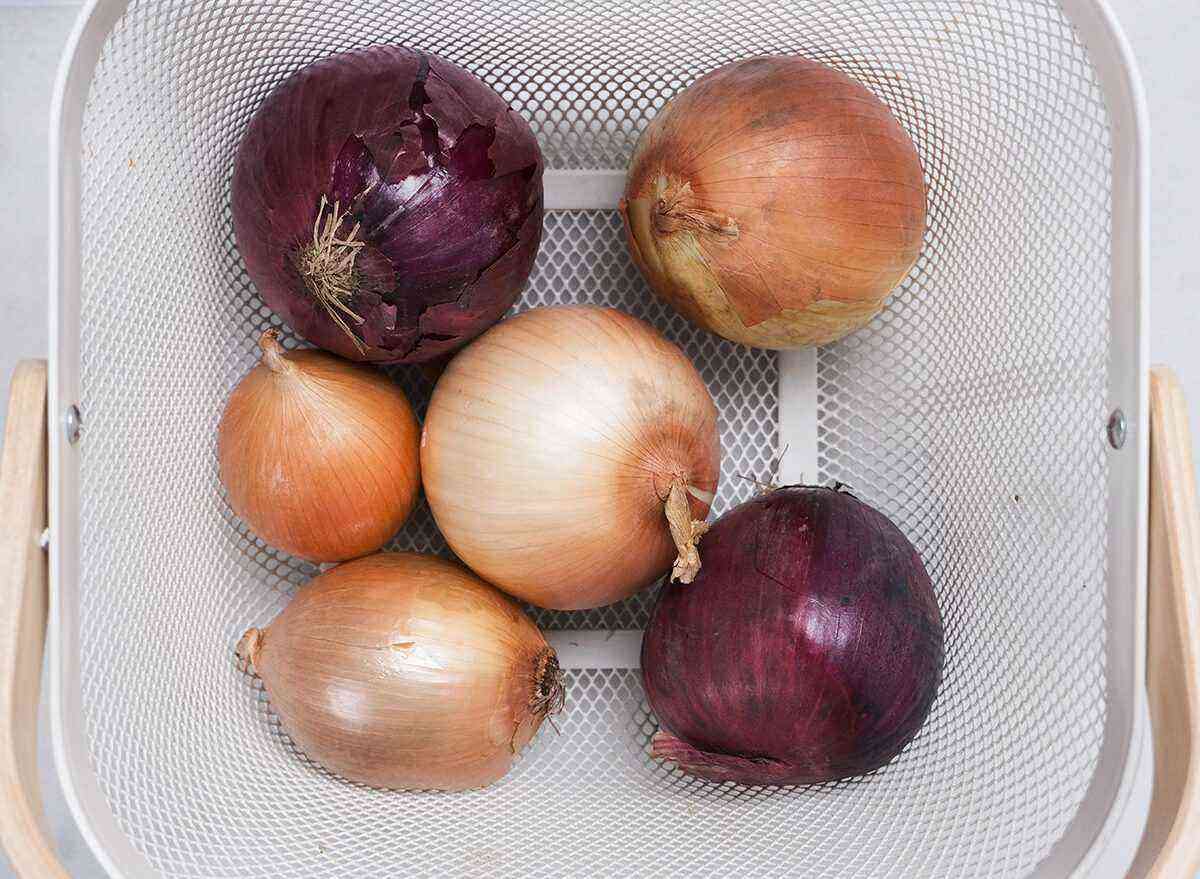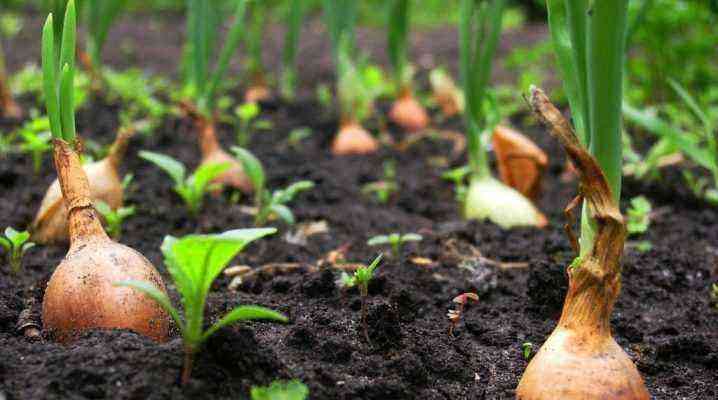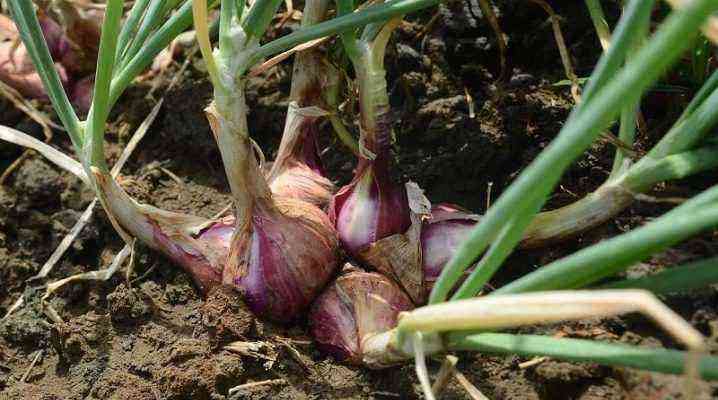Batun onions are popular all over the world, they are loved for their unpretentiousness, ease of care and original taste. Unlike common onions, batun greens are not as spicy and do not give an unpleasant aftertaste. Therefore, the vegetable is very common in gardens, and even a beginner can cope with its cultivation.
Plant characteristics
Onion batun is a perennial plant. In the wild, it is found in Southeast Asia, Siberia, and Japan. It is also called “angelica”, “tatar” or Chinese bow. A distinctive feature of this plant is the absence of a large bulb. The fruits of onion-batun are oblong, not sharp, slightly thickened at the end.
They grow onions for the sake of greenery. The feathers of this onion, unlike onions, are thicker and hollow inside. They can reach a diameter of 2,5 cm. If not cut, they grow up to 1 m. The variety is popular because of the delicate mild taste and lack of a strong smell, which is why it is called odorless garlic.
Batun onions are as useful as onions. It contains many vitamins, minerals, amino acids, saturated fatty acids. Only 150 g of greens contain the daily requirement of vitamins C and A. Batun onions have a higher nutritional value than ordinary onions.
In addition to valuable nutritional qualities, this plant attracts gardeners with its ease of cultivation. Its distinctive features are the following properties:
- grows in one place for 8-10 years, although after 4 years after planting it becomes smaller and thicker;
- if the feathers are not collected in time, they become stiff;
- already in the second year, it throws out 1-2 peduncles from each bush, on which small seeds appear;
- grows well on any soil, but does not tolerate both the lack of water and its excess;
- it is best to grow onions in partial shade, because. in the bright sun, the leaves will dry, arrows form faster;
- tolerates light frosts well.
Onion varieties
The culture is widespread everywhere, a lot of this onion grows wild. For cultivation in the garden, varieties with the most valuable nutritional properties are used. Those that quickly sing and give a lot of greenery are also popular.
There are several of the best varieties of onion-batun:
- Russian size. It is distinguished by tall and thick stems, which are not only added to salads, but also stuffed.
- Emerald. It is a hybrid of batun and onions, so its leaves are sharper than others. They are dark green, juicy, good to use in salads. The variety is resistant to frost and pests.
- Russian winter. Grown as a perennial, it has a special value in the second year – it gives a lot of succulent leaves. Unlike other varieties, it has a longer bulb. Keeps well after cutting.
- April. It ripens before everyone else, appears as soon as the snow melts. Withstands frosts down to -10 degrees, resistant to pests, but does not tolerate weeds. It produces sweetish fleshy leaves rich in vitamins and minerals. Its peculiarity is that it can produce 3-4 crops per season.
- Tenderness. Valued for good yield, pleasant taste. You can collect it in the spring. The leaves are light, with a delicate sweetish taste, the bush does not branch much, does not grow above 50 cm.
- Baron. Early ripe, tolerates frost well, unpretentious. Gives a big harvest only in the second year. The leaves are straight, bright, sharp in taste. They can be prepared for the winter by freezing.
The choice of a batun variety for cultivation depends on many factors. It is necessary to take into account the climatic conditions of the area, soil features. The choice also depends on how quickly you need to get the crop and what it will be used for – for salads or long-term storage. You also need to take into account taste preferences, since all varieties have different tastes: some are spicier, others are sweetish.
Features of growing onion-batun
The most common plant is grown from seeds. This is done in two ways: seedlings or sowing in open ground.
A vegetative variant of cultivation is also possible, that is, by dividing the bush. At the end of August or at the beginning of September, 2-3 shoots are separated from each old bush, the cut is dried and smeared with ash, and then planted. Before cold weather, the plant should take root. With this method of growing greens are less tasty.
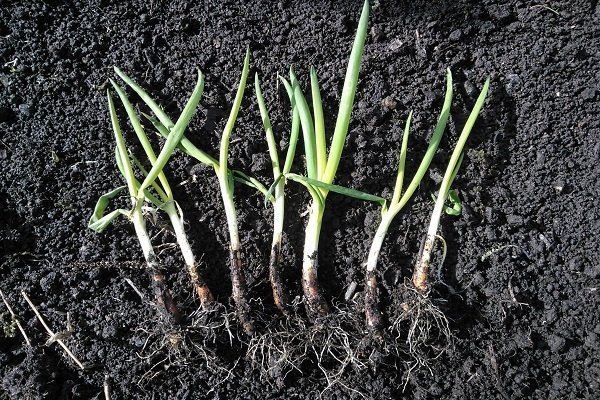
Usually cultivated onion-batun as an annual or biennial plant:
- annual it is better because its leaves are more juicy and tender, not very wide, the bulbs are not bitter. But the harvest is harvested only from the middle of summer, and when grown as an annual, the bushes are dug up entirely together with the bulbs.
- Biennial culture more widespread. At the same time, the seeds are sown at the beginning of summer, the plant is watered and fed, but the harvest this season is small, only individual leaves can be cut. Shoots appear in spring, by mid-May they can be used for food. With this method of cultivation, the crop is harvested several times per season.
In order for the onion batun to please the gardener with juicy tender greens, not to dry out and not get sick, when planting it, certain rules must be observed, which are important regardless of the method of cultivation:
- the soil should be sandy or loamy; onions do not tolerate acidic soils;
- you need to feed the plant with organic matter or complex mineral fertilizers;
- onions do not like drought, they need to be watered on time;
- it is undesirable to plant it in a place that is flooded in the spring, because. the bow will shoot quickly;
- several times during the season you need to loosen the soil or replace this process with mulching.
Onions do not have a dormant period, so they are easy to grow on the windowsill all year round. You can also save it for the winter by transplanting the bush into a flower pot in the fall.
Soil requirements
Batun onions love soddy soil, rich in humus, but not acidic. A good place for it would be loam or sandy loam soil. You can plant it in a place that does not meet these requirements, but in order to obtain a crop, the soil will have to be enriched. Peat, black earth are added to the sand, and rotted organic matter is added to the loam. Acidic soil needs to be limed.
A place for planting must be chosen so that the sun does not illuminate the plant all day. You can even sow it in the shade. It is recommended to plant onions after legumes, cabbage, pumpkins, zucchini. If tomatoes were previously grown at this place, the risk of infection of the plant with a fungus increases. It is also undesirable to plant it after garlic, onions, cucumbers, carrots.
It is advisable to prepare a place for landing in advance. When sowing in spring, this should be done in the fall. After applying mineral fertilizers and organic matter, the soil must be dug up and beds formed. It is recommended to fertilize the soil with rotted manure in the amount of 100 g/sq. m. Such fertilizers are also useful: nitrogen – 10 g, phosphorus – 12 g, potassium – 8 g.
When sowing seeds in open ground, it is very important to carefully free the soil from all weeds. Batun onion is very sensitive to such a neighborhood, and it is difficult to weed it. Young shoots are so thin, and the roots are tender, that the plant itself is pulled out along with the weed.
Terms of planting
Onions are sown in open ground 2-3 times per season:
- Early spring (April). When planted in spring, greens can be collected in the summer, the bushes also form several peduncles. Spring shoots appear no earlier than 2 weeks after sowing.
- Summer (June). Summer planting is mainly done for growing biennials. Seedlings appear within a week.
- Autumn (October-November). Batun onions are sown before winter to get an early harvest next year. To do this, wait until the temperature drops to 3 degrees. If you sow the seeds earlier, they may not sprout.
Growing seedlings from seeds
This growing method is quite troublesome, but has many advantages. The most important thing is saving seeds, which almost everything germinates at home. When growing seedlings, the crop can be harvested as early as the beginning of summer. Another advantage of this method is the absence of hassle with weeds.
Sow seeds in greenhouses, cups or containers around mid-March. The soil is a mixture of humus with turf, to which ash and fertilizers are added. It is better to buy ready-made land for seedlings, which is enriched with all the necessary substances.
The step by step process looks like this:
- Grooves are made in prepared containers and seeds are sown. Previously, it is recommended to keep them in the refrigerator for several days at a temperature of 6 degrees, then wrap them in wet gauze for a day. This will increase their germination.
- After sowing, the seeds are covered with earth, watered, the container is covered with a film. You need to monitor the humidity, keep the container on a sunny windowsill and sometimes open the film for ventilation.
- When shoots appear, the film must be removed. For the normal development of the plant, the air temperature should be about 16 degrees, and at night – even lower.
- Once every 2 weeks, the sprouts need to be fed with a complex mineral fertilizer.
- When full-fledged leaves appear, the seedlings thin out a little – they should be at a distance of 2-3 cm from each other.
- A week before planting seedlings in open ground, you need to start taking seedlings out to the balcony during the day. At this time, at least 3-4 leaves should form on the bush.
The plant is transplanted to the garden in 40-60 days. When transplanting, it is not necessary to dig out the bushes – they are transferred to the garden directly with a clod of earth.
In a similar way, you can grow onion-batun in the winter on the windowsill. The pot should be deep, with drainage holes. A prerequisite for lush greenery is a sufficient amount of light – at least 14 hours a day, so additional lighting is needed.
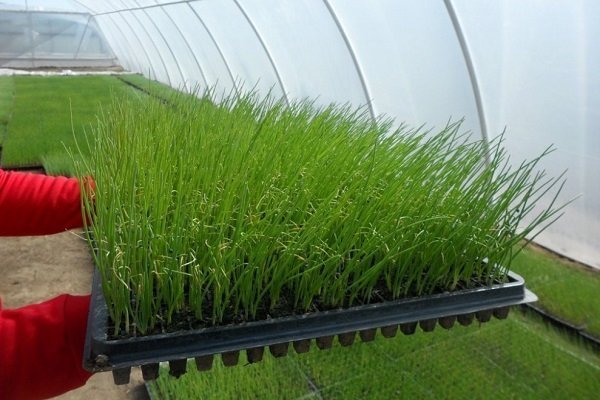
Sowing in open ground
To sow onions in open ground, many requirements must be met. It is important to take into account the timing of planting, the characteristics of the soil, the place in the garden. The seeds of this plant do not germinate well, so it is better to activate them. There are 3 ways to do this:
- soak for a day in warm water;
- soak by adding a growth stimulator or fertilizer to the water;
- use bubbling – soaking with air supply, this can be done using an aquarium compressor.
Before soaking, you can hold the seeds in a weak solution of potassium permanganate. This will help prevent common illnesses. After soaking, the seeds must be dried to facilitate sowing.
When planting seeds in spring or summer, a groove 1,5-2 cm deep is made on the finished bed, watered with water. Then seeds are densely poured into it. The norm is 1,2 g per 1 sq. m. The thicker, the softer the onion feathers will turn out. After sowing, the seeds are sprinkled with dry earth with humus and watered again.
There should be at least 20-25 cm between rows. After the seeds sprout, the seedlings need to be thinned out, leaving the strongest plants. There should be 5-8 cm between them. With a rarer planting, the leaves of the plant will be tough.
Before winter, onions are sown to a depth of 2-4 cm, depending on the soil, so that the seeds do not freeze. After that, the bed is leveled and compacted. To protect the plant from frost, you need to sprinkle the soil on top with mulch, you can sketch fir branches. In the spring, the cover is removed, but the bed is covered with a film: thanks to the greenhouse effect, the seeds will sprout faster.
Care culture
Onion-batun does not tolerate a lack of moisture. Without watering, hard, fibrous and sharp feathers grow, which dry or turn yellow. A flower arrow quickly appears, which also makes the plant unfit for food. Therefore, the main condition for a tasty harvest is regular watering. At the same time, the soil should get wet to a depth of at least 20 cm. It is desirable that the water for irrigation be warm.
It is not necessary to fertilize the plant in the first year. It is enough that it is added to the soil before planting. In the second year, top dressing is needed, preferably organic. If mineral fertilizers are used, there should be some nitrogen in them, since the onion accumulates nitrates.
It is necessary to regularly loosen the earth, especially after heavy rains. An important condition for a good harvest is also the removal of weeds.
Diseases and pests
Batun onions are affected by the same diseases and pests as the entire bulb family. It can be:
- black mold;
- fusariosis;
- bulb fly;
- nematode;
- powdery mildew;
- rust.
The problem is that onions cannot be sprayed with chemicals, as they will become unfit for food. Therefore, we must try to prevent diseases. To do this, it is important to remove weeds in time, to prevent stagnation of water so that rot and mold do not appear. To prevent diseases, plants are also sprayed with infusion of onions, garlic, green potatoes or tomatoes.
Powdery mildew spreads especially quickly in wet, cool weather. With this disease, the leaves and bulbs are covered with a white-purple bloom. Rust and fungus may appear. Bordeaux mixture or blue vitriol help them. The leaves processed by them are better not to be eaten.
Batun onions can be affected by pests:
- root nematode, bulb fly or onion thrips climb inside the stem or gnaw through the bulb;
- the onion weevil pierces the leaf and sucks the juice.
You can only fight insects with the help of insecticides (for example, by spraying the beds with Karbofos), so it is better to prevent their appearance. To do this, it is recommended to treat the plantings with a solution of mustard powder. It is harmless to humans, but pests do not tolerate it.
Harvesting and storage of crops
Cut off the onion feathers as needed. You can start harvesting a month after planting, when the stems reach a length of 15-20 cm. Leaves are cut from June to September. This should be done almost at ground level.
Usually harvested 2-3 times per season, the last time they dig up the plant along with the bulbs. If the plant is left for the winter, a month before the frost, you need to stop cutting the leaves so that it is prepared for the cold.
Feathers are stored in the refrigerator, packed in bags or plastic wrap. Batun onion does not lose its properties and taste within a month. You can save the stems for the winter. To do this, they are washed, dried and put in containers, and then frozen. Sometimes it is recommended to chop the onion and dry it. When stored this way, it is used as a condiment.
Watch a video about the features of planting and growing onions in the garden:
Many gardeners plant batun several times a year in order to be able to constantly cut off its juicy tasty stems. The undeniable advantages of this vegetable and ease of cultivation make it one of the most popular garden crops.
